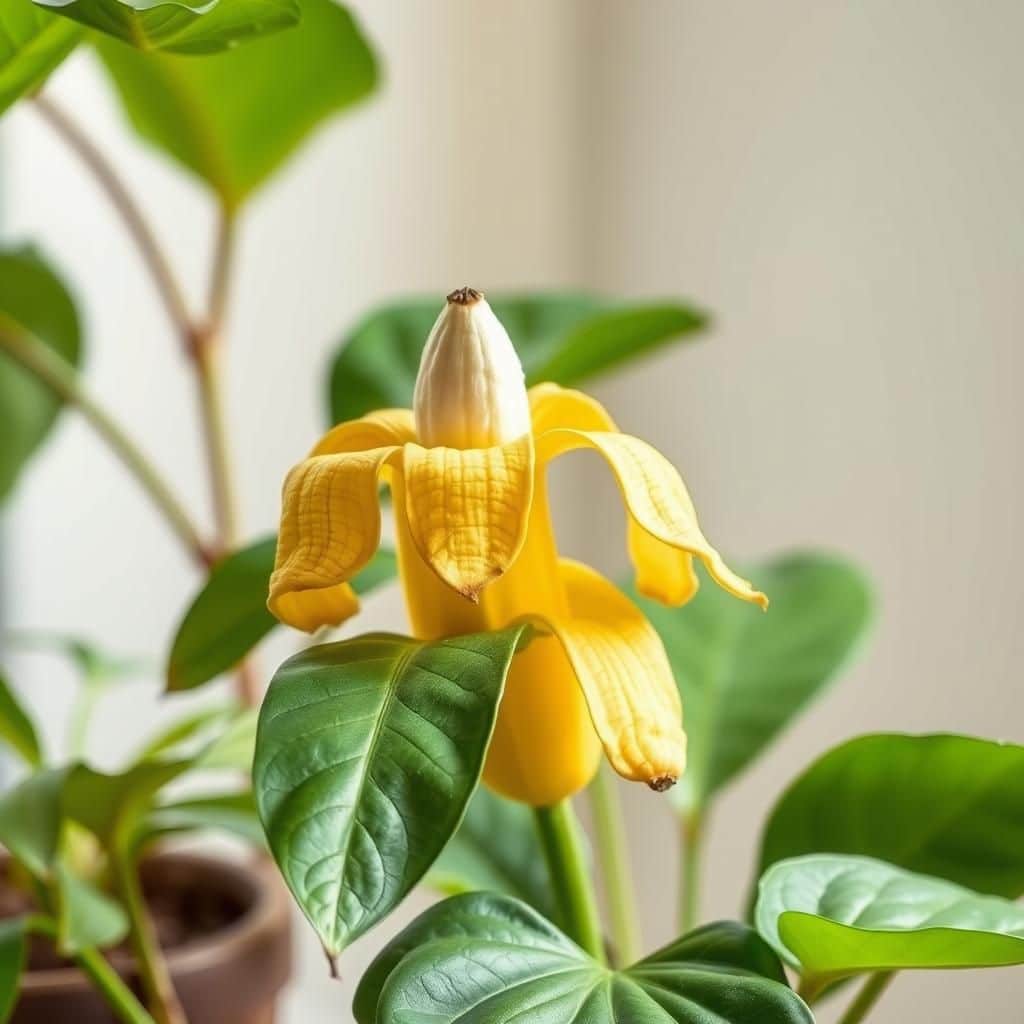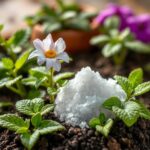What Happens If You Put Banana Peels on a Plant? Discover the Benefits and Tips for Indoor Gardening

Banana peels are often discarded as waste, but they can be a valuable addition to your indoor gardening routine. Packed with essential nutrients like potassium, phosphorus, and calcium, banana peels can help promote healthy plant growth and enhance soil quality. In this article, we will explore the benefits of using banana peels on your plants and provide practical tips on how to incorporate them effectively into your indoor gardening practices. Discover how this simple kitchen scrap can turn into a powerful ally for your greenery, transforming both the health of your plants and your gardening experience.
Effects of Banana Peels on Plant Growth
Applying banana peels to plants can significantly benefit their growth due to the rich nutrient content found within the peels. Banana peels are an excellent source of potassium, phosphorus, and calcium, all essential nutrients for plants. When decomposed, the peels release these nutrients into the soil, promoting healthy root development and enhancing overall plant vigor. Moreover, the organic matter in banana peels can improve soil structure and moisture retention, leading to a healthier growing environment for plants. However, it is essential to chop the peels into smaller pieces to accelerate decomposition and prevent potential pest attraction.
Nutritional Content of Banana Peels
Banana peels contain a variety of essential nutrients that benefit plants. The most notable among these are potassium, which helps regulate water in plant cells and supports flower and fruit production; phosphorus, crucial for root development and energy transfer; and calcium, which strengthens cell walls and aids in growth. Furthermore, these nutrients can enhance the soil's microbial activity, contributing to a healthier soil ecosystem. Overall, the nutritional benefits of banana peels can promote more vigorous plant growth.
How to Use Banana Peels in Gardening
To effectively use banana peels in gardening, it is recommended to chop them into smaller pieces before adding them to the soil. Small pieces decompose more quickly, allowing nutrients to be released faster into the soil. Gardeners can also bury banana peels around the base of plants or add them to compost bins to enrich the compost mix. Another method is to steep the peels in water to create a liquid fertilizer, which can be used to water plants and provide a nutrient boost. Using banana peels regularly can contribute towards sustainable gardening practices.
Potential Drawbacks of Using Banana Peels
While banana peels can offer many benefits, there are potential drawbacks to consider. If not used properly, they may attract pests such as fruit flies or rats, particularly if left on the surface of the soil or in large quantities. Additionally, using too many banana peels may lead to nutrient imbalances in the soil, particularly from an excess of potassium, which can be detrimental to specific plants. It is vital to use banana peels in moderation and consider their integration into a well-balanced fertilization routine.
Banana Peels vs. Traditional Fertilizers
Banana peels provide a natural alternative to traditional fertilizers, which often contain synthetic chemicals. The organic nature of banana peel fertilizer enhances soil health and encourages beneficial microorganisms, promoting a more sustainable garden ecosystem. Unlike many synthetic fertilizers that can leach into waterways and cause pollution, banana peels break down naturally, providing a slow release of nutrients over time. However, they may not offer the same immediate nutrient density as some commercial fertilizers, making it essential to combine organic methods with other fertilization practices for optimal results.
Banana Peel Fertilizer Recipes
There are several simple recipes for creating homemade banana peel fertilizer. One popular method is to blend banana peels with water to create a nutrient-rich liquid fertilizer. This liquid can be diluted with more water before applying it to the soil. Another method involves burying dried and crushed banana peels directly in the garden or potted plants. For composting, adding chopped banana peels into the compost pile can accelerate the breakdown process and enrich the compost with valuable nutrients. These DIY approaches can be a sustainable and cost-effective way to boost plant growth.
| Nutrient | Benefits |
|---|---|
| Potassium | Regulates water in plant cells; supports flowering and fruiting |
| Phosphorus | Essential for root development and energy transfer |
| Calcium | Strengthens cell walls and encourages healthy growth |
| Organic Matter | Improves soil structure and moisture retention |
| Microbial Activity | Enhances soil health and nutrient cycling |
Is banana peels in water good for plants?


Yes, banana peels in water can be beneficial for plants. Banana peels are rich in essential nutrients such as potassium, phosphorus, and calcium, which are crucial for plant growth. When banana peels are submerged in water, they release these nutrients, making it easier for plants to absorb them. The resulting infusion can serve as a natural fertilizer, promoting healthy plant development and enhancing flowering and fruiting.
Benefits of Using Banana Peels
Using banana peels in gardening provides several advantages. Here are some key benefits:
- Nutrient-Rich: Banana peels contain high levels of potassium, phosphorus, and calcium, which support strong root development and fruit production.
- Organic Fertilizer: They serve as a natural fertilizer, free from harmful chemicals, making them safe for home gardens.
- Soil Enrichment: Decomposing banana peels improve the soil structure, enhancing its ability to retain moisture and nutrients.
How to Prepare Banana Peel Fertilizer
To create a banana peel fertilizer, follow these simple steps:
- Collect Peels: Gather banana peels and cut them into smaller pieces for better nutrient extraction.
- Submerge in Water: Place the cut peels in a container filled with water and let them sit for 24 to 48 hours.
- Strain and Use: After steeping, strain the liquid and use it to water your plants.
Best Plants for Banana Peel Water
Certain plants particularly benefit from banana peel water. Notable examples include:
- Tomatoes: They thrive on potassium, aiding in fruit development.
- Roses: The nutrient-rich water promotes blooming and overall health.
- Peppers: High potassium levels help in fruit production for peppers.
Pest Deterrent Properties
Banana peels can also act as a pest deterrent. Here are some aspects:
- Natural Repellent: Certain compounds in peels may repel pests, keeping plants safe.
- Attracts Beneficial Insects: Pests may be deterred, while beneficial insects are attracted, promoting a balanced ecosystem.
- Companion Planting: Mixing banana peels with other plants can enhance plant relationships in a garden.
Limitations and Considerations
While banana peels are beneficial, there are some limitations to consider:
- Overuse Risks: Excessive application can lead to nutrient imbalances in soil.
- Potential Attraction of Pests: Decomposing peels may attract unwanted pests if not managed properly.
- Timing and Method: The efficacy of banana peels may vary based on plant type and growing conditions.
Are banana skins good for plant leaves?

Banana skins can be beneficial for plant leaves due to their rich nutrient content. These peels contain several essential nutrients such as potassium, phosphorus, and calcium, which are crucial for plant growth and overall health. When incorporated into the soil or used as a natural fertilizer, banana peels can enhance plant growth and improve the vigor of the leaves. The nutrients gradually leach into the soil, making them readily available for the plants, leading to enhanced leaf development.
See also:
Benefits of Using Banana Skins for Plants
Using banana skins in the garden offers numerous advantages:
- Rich in Nutrients: Banana peels are packed with essential nutrients, particularly potassium, which supports leaf development.
- Organic Matter: They contribute to improving soil structure as they decompose, aiding in moisture retention.
- Pest Deterrent: Some gardeners claim that banana peels can help repel pests due to their strong scent.
How to Use Banana Skins Effectively
To maximize the benefits of banana peels for your plants, consider the following methods:
- Composting: Add banana peels to your compost bin to create nutrient-rich compost that can be used as a natural fertilizer.
- Soil Amendment: Chop banana peels into small pieces and bury them in the soil around your plants to ensure nutrients are released gradually.
- Banana Peel Tea: Soak banana peels in water for a few days and use the resulting liquid as a nutrient-rich plant tonic.
Effect on Leaf Health
Banana skins positively impact the health of plant leaves in various ways:
- Enhanced Growth: The potassium from banana peels aids in improving leaf growth and coloration.
- Improved Resistance: Nutrients from the peels help plants develop stronger foliage, making them more resistant to diseases.
- Increased Photosynthesis: Healthier leaves can photosynthesize more effectively, leading to better overall plant health.
Potential Drawbacks
While there are many benefits, there can be some drawbacks to using banana peels:
- Pest Attraction: If not properly managed, decomposing banana peels can attract pests or rodents.
- Overuse Issues: Excessive use of banana peels can lead to nutrient imbalance in the soil.
- Fungal Growth: In humid conditions, banana peels can promote fungal growth if they are not buried adequately.
Other Uses for Banana Skins in the Garden
Aside from benefiting plant leaves, banana peels have several other uses in gardening:
- Fertilizer for Roses: Many gardeners use banana peels specifically for rose plants due to their potassium content.
- Attracting Beneficial Insects: The scent of banana peels can attract pollinators and other beneficial insects to the garden.
- Natural Pest Repellent: Placing banana peels near certain plants can help deter garden pests.
Questions from Our Readers
What nutrients do banana peels provide to plants?
Banana peels are rich in essential nutrients such as potassium, phosphorus, and calcium, which are beneficial for plant growth. When added to the soil or compost, they can help improve the nutrient content and promote healthier plant development.
Can banana peels attract pests to my garden?
Yes, using banana peels in your garden may attract pests such as fruit flies and ants due to their natural sugars. However, if used in moderation and properly incorporated into the soil, they can provide a nutritional boost without significantly increasing the risk of infestation.
How should I use banana peels for my plants?
You can use banana peels by either burying them directly in the soil, chopping them into small pieces, or blending them into a nutrient-rich compost. This will allow the nutrients to be easily absorbed by plant roots, enhancing their overall health and growth.
See also:
Are there any plants that do not benefit from banana peels?
While most plants appreciate the nutrients from banana peels, some highly acidic plants, like blueberries and azaleas, may not thrive with the addition of peels. It's important to consider the specific nutritional needs of each plant type before using banana peels.

If you want to read more articles like What Happens If You Put Banana Peels on a Plant? Discover the Benefits and Tips for Indoor Gardening, we recommend you check out our Plants category.
Leave a Reply
Related Articles